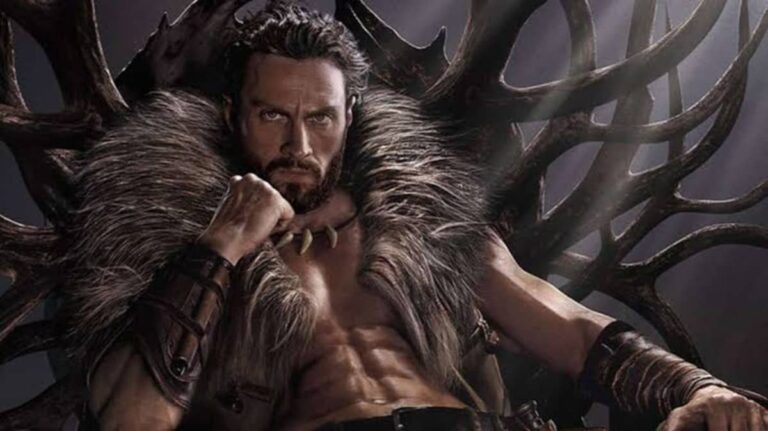Kraven the Hunter, directed by J.C. Chandor, delivers a gripping origin story for Sergei Kravinoff, a troubled youth turned anti-hero vigilante, portrayed by Aaron Taylor-Johnson.
The film charts Sergei’s evolution into the titular Kraven, as he embraces his destiny as a hunter and faces off against family betrayal, setting up potential future narratives in the Marvel universe.
The ending leaves fans speculating about what lies ahead for Kraven and his half-brother Dmitri, whose transformation poses new challenges for the hunter’s journey.
Kraven’s Transformation: Embracing the Hunter Within
The finale of Kraven the Hunter marks a turning point for Sergei Kravinoff. After a lifetime of grappling with his identity and rejecting his father Nikolai’s ruthless legacy, Sergei fully embraces his role as a hunter.
The climactic showdown with Nikolai forces Sergei to confront not only his father’s criminal empire but also his own inner turmoil.
Sergei’s symbolic donning of a lion’s head vest, crafted from the very beast that once mauled him, is a moment of catharsis. It represents his acceptance of the primal, predatory instincts within him, reshaped into a force for justice.
The film positions Kraven as an anti-hero, walking a fine line between savagery and morality, which makes his character all the more compelling.
Dmitri’s Betrayal and Shapeshifting Powers
A pivotal twist in the story is Dmitri’s betrayal. Initially an ally, Dmitri’s motives are revealed to be driven by envy and ambition.
After acquiring shapeshifting powers, Dmitri becomes a formidable adversary, capable of mimicking appearances to manipulate and deceive.
His newfound abilities make him a significant threat to Kraven, both emotionally and physically.
Dmitri’s transformation also teases his potential evolution into the Chameleon, one of Spider-Man’s classic adversaries from the comics.
This sets up an intriguing conflict for a possible sequel, where the dynamic between Kraven and Dmitri could evolve from personal betrayal to a larger battle of ideologies.
Thematic Layers: Family and Legacy
At its core, Kraven the Hunter explores themes of family and legacy. Sergei’s rejection of his father’s criminal empire and Dmitri’s quest for power underscore contrasting approaches to their shared heritage.
While Sergei channels his pain into a mission of vigilante justice, Dmitri’s shapeshifting powers reflect his willingness to abandon identity for ambition.
This thematic depth adds layers to the characters, making their eventual confrontation more than just a physical battle—it’s a clash of ideals, loyalty, and personal growth.
What Lies Ahead for Kraven and Dmitri?
The film’s conclusion leaves several threads open for future exploration.
Sergei’s transformation into Kraven positions him as a central figure in Sony’s Spider-Man Universe, potentially setting him up for crossover events with other characters like Venom or Morbius.
His anti-hero persona could make him a reluctant ally or adversary in future conflicts.
Dmitri’s role as a shapeshifter opens doors for more complex narratives. His ability to mimic others could lead to espionage-driven storylines or even ties to larger Marvel Universe events.
As Kraven’s most personal antagonist, Dmitri is likely to challenge Sergei in ways that go beyond physical confrontation, testing his resolve and identity.
Final Thoughts
Kraven the Hunter not only serves as an origin story but also lays the groundwork for an expansive narrative universe.
The rivalry between Kraven and Dmitri, rooted in betrayal and opposing ideals, promises to be a central thread in future installments.
With Sergei embracing his identity as a hunter and Dmitri stepping into the role of a shapeshifting antagonist, the stage is set for a thrilling continuation of their intertwined fates.
As the Marvel universe continues to grow, Kraven the Hunter stands out as a darker, character-driven addition, leaving audiences eager to see what’s next for Sergei and Dmitri.
